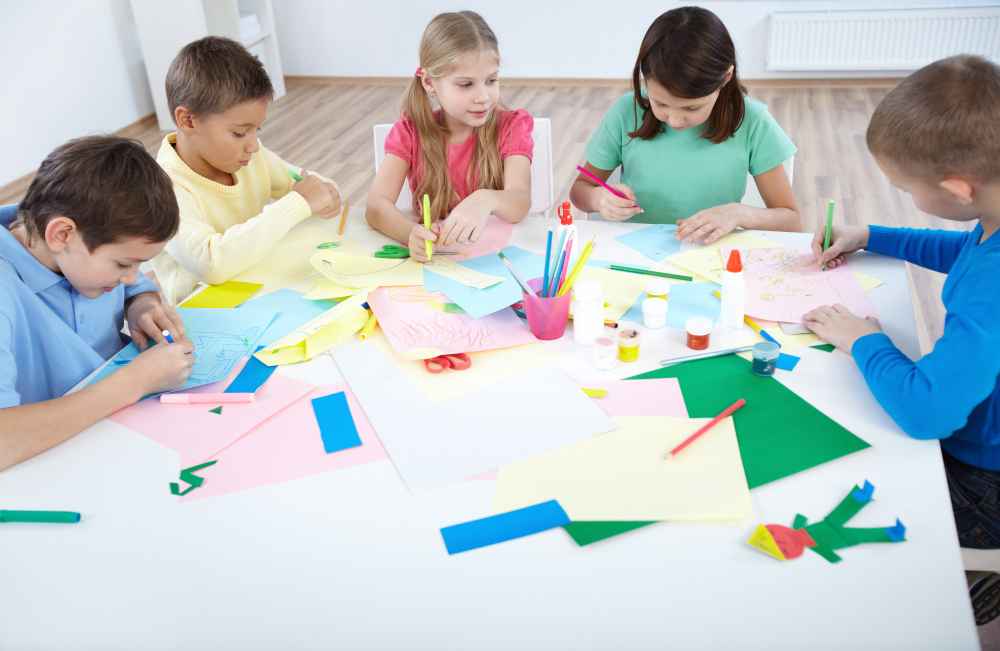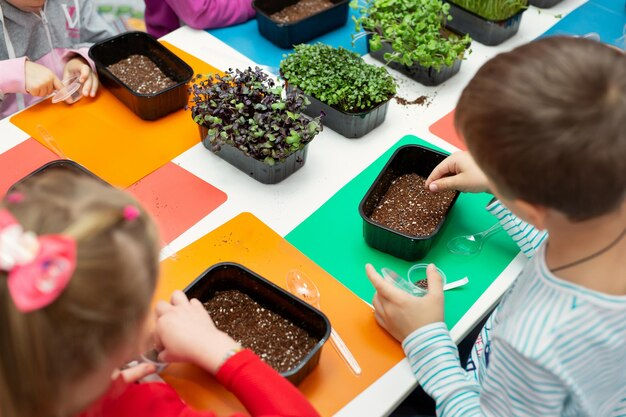
Introduction:
Preschools play a crucial role in shaping the values and habits of young learners. As the world increasingly embraces the importance of sustainability, integrating eco-friendly practices into early childhood education becomes imperative. Art and craft activities, staples of preschool learning, provide a fantastic avenue to instill environmentally conscious practices from an early age. This article explores how preschools can seamlessly weave sustainability into art and craft activities, fostering a generation that values both creativity and the planet.
1. Eco-Friendly Crafting Materials:
The choice of crafting materials significantly influences the environmental impact of art projects. Preschools can prioritize the use of recycled and upcycled materials, such as cardboard, paper scraps, and fabric remnants. Additionally, opting for non-toxic and water-based paints, glues, and markers ensures a safe and eco-friendly crafting environment for both children and educators.
2. Nature-Inspired Creations:
Infusing a nature theme into art and craft activities not only sparks creativity but also promotes an appreciation for the environment. Preschoolers can explore creating art with natural elements like leaves, twigs, and flowers, encouraging a connection with the outdoors. Incorporating themes like animals, plants, and ecosystems provides an educational opportunity to learn about the importance of preserving the environment.
3. Waste Reduction Techniques:
Sustainable practices in art and craft extend to minimizing waste. Preschools can introduce practices like repurposing materials from previous projects or creating collaborative artworks using leftover materials. This not only reduces waste but also teaches children about the concept of reusing and repurposing materials in a fun and engaging way.
4. Energy-Efficient Workspaces:
Creating art and craft activities that promote energy efficiency is another aspect of sustainable integration. Preschools can utilize natural light when possible, reducing the need for excessive artificial lighting. Additionally, incorporating energy-efficient appliances and encouraging the habit of turning off lights and equipment when not in use fosters an early understanding of responsible energy consumption.
5. Community and Global Awareness Projects:
Preschool art projects can extend beyond the classroom to address larger environmental issues. Engaging children in community and global awareness projects, such as creating artwork for Earth Day or participating in local environmental initiatives, instills a sense of responsibility towards the planet. These activities provide an opportunity for children to understand their role in a broader context and the impact they can have on the world around them.
6. Gardening and Upcycled Planters:
Connecting art and nature, preschools can integrate gardening activities into craft projects. Children can create upcycled planters using recycled containers or materials, fostering an understanding of the lifecycle of plants and the importance of sustainable gardening practices. This hands-on experience allows children to witness the direct impact of their creations on the environment.

7. Educational Conversations:
Sustainability in art and craft activities also involves incorporating educational conversations. Teachers can use art projects as a platform to discuss topics such as recycling, conservation, and the importance of protecting the environment. These conversations enhance children’s understanding of their role as stewards of the Earth, instilling values that go beyond the confines of the art studio.
8. Parent and Community Involvement:
Preschools can extend their sustainable art and craft initiatives by involving parents and the community. Hosting eco-friendly art exhibitions or involving parents in crafting workshops not only strengthens the sense of community but also spreads awareness about sustainable practices. Collaboration between educators, children, and families creates a holistic approach to instilling eco-conscious values.
Also Read ; Nurturing Creativity in Children: The Role of Creative Art Activities
How to Find the Best Montessori Preschool for Your Kids in Los Angeles?
When in search of a preschool that seamlessly integrates sustainable practices into art and craft activities, consider Shir-Hasirim Montessori School . Located on Carlton Way in Los Angeles, this esteemed institution caters to children aged 2 to 6, paving the way for a generation deeply committed to environmental stewardship.
Shir-Hasirim Montessori School not only places a strong emphasis on academic development but also prioritizes a sustainable and eco-friendly environment. The school incorporates art and craft activities that utilize recycled and environmentally conscious materials, instilling an early understanding of the importance of conservation. By infusing nature-inspired creations into the curriculum, Shir-Hasirim encourages children to appreciate the environment and think creatively about sustainable solutions.
Through their eco-friendly crafting initiatives, Shir-Hasirim Montessori School allows students to develop a strong connection with nature and learn the significance of responsible resource use. Students at Shir-Hasirim enjoy the freedom to express their creativity while also imbibing essential practical life skills, such as reusing materials and reducing waste. Opting for a preschool committed to sustainability, like Shir-Hasirim, significantly contributes to shaping environmentally conscious individuals who value the importance of sustainable practices in art and beyond.
Conclusion:
In conclusion, integrating sustainable practices into art and craft activities in preschools is a powerful way to instill eco-friendly values from a young age. By choosing eco-friendly materials, exploring nature-inspired creations, reducing waste, promoting energy efficiency, engaging in community projects, and fostering educational conversations, preschools can create an environment that not only nurtures creativity but also cultivates a deep respect for the planet. These sustainable practices in early childhood education pave the way for a generation that approaches art with a green mindset, contributing to a more environmentally conscious and responsible future.


